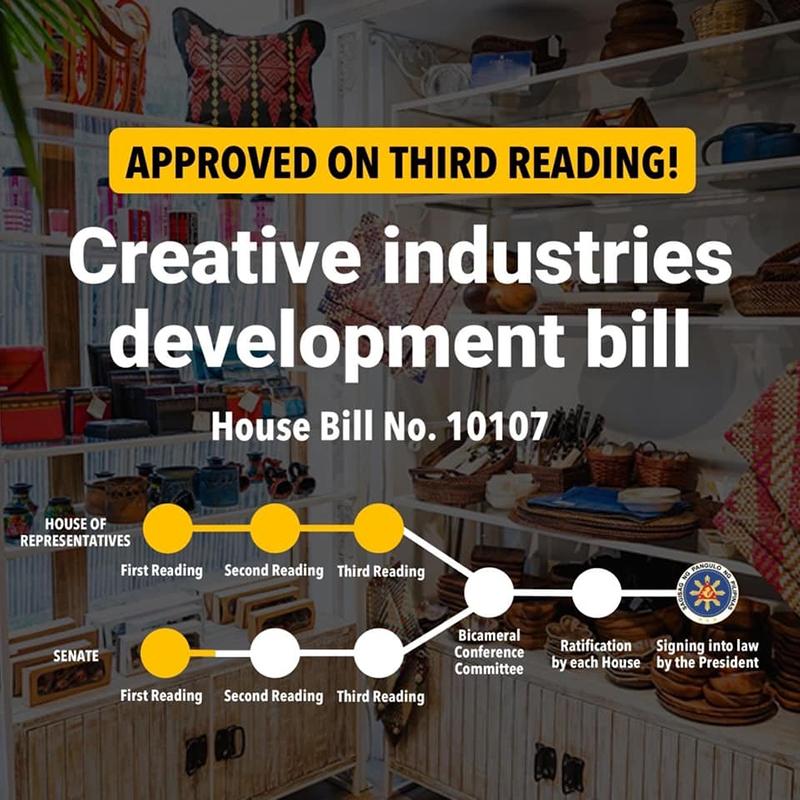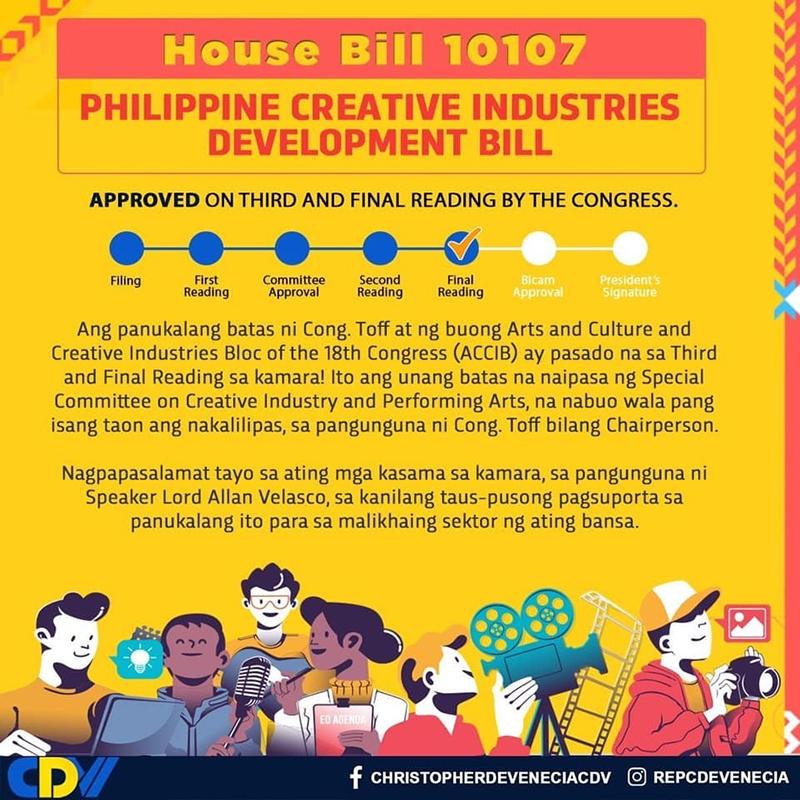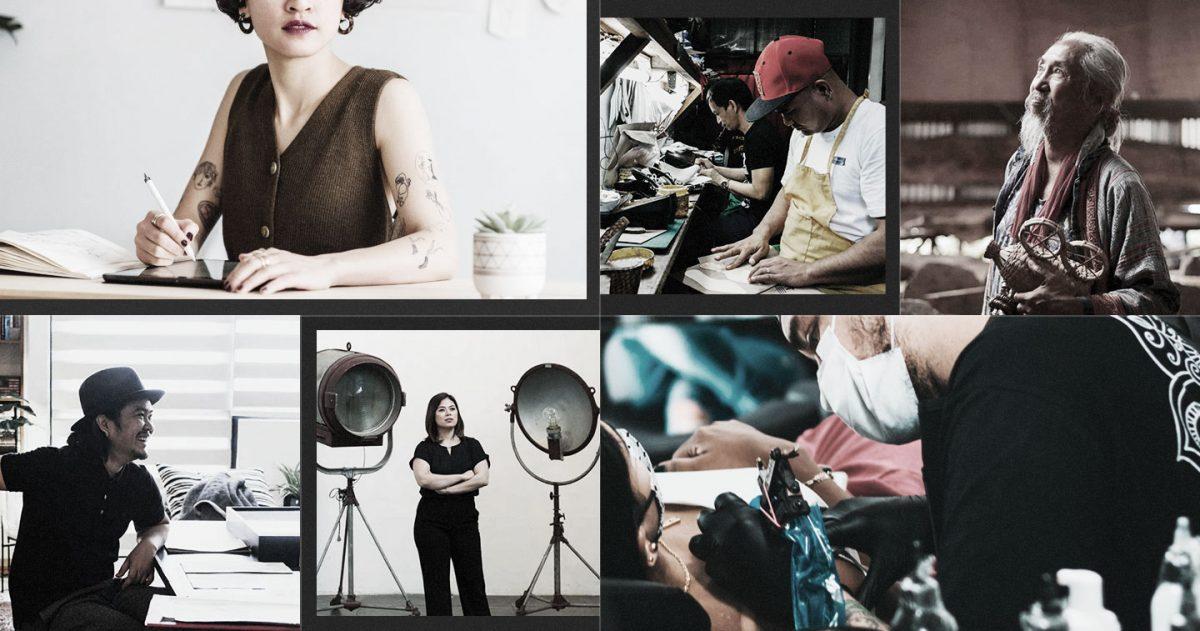MANILA, PHILIPPINES — In the wake of the debilitating effects that the COVID-19 pandemic has wrought worldwide, a landmark bill has been passed by Congress to attempt to alleviate the pandemic’s effect on creatives in the Philippines.

House Bill 10107, or the Philippine Creative Industries Development Act, has been passed on third reading. The bill aims to organize and institutionalize the Philippine creative economy in order to provide opportunities to workers in one of the sectors hit hardest by the current health crisis. Principally authored and sponsored by House Committee on Creative Industry and Performing Arts Chair Pangasinan 4th District Rep. Christopher “Toff” De Venecia, the urgency to pass the bill has perhaps never been more evident than it has been now.
With movie cinemas, theaters, and even museums still shuttered and with music concerts and art festivals still not allowed and forced to be conducted online, thousands of Filipinos in the creative industries have been hit hard by the effects of the global pandemic. This has been particularly difficult in the Philippines, where a large chunk of creative and artistically talented people have made a living for themselves and their families through performance and exhibits in front of a paying public.
These are just some of the reasons why the Philippine Creative Industries Development Act has been approved 175-0 with zero abstentions on the third reading. “We thank our colleagues for supporting the passage of House Bill 10107 or the proposed Philippine Creative Industries Development Act, one of the measures we have identified that will help the country bounce back from the economic woes brought about by the COVID-19 pandemic,” said House Speaker Lord Allan Velasco.

In a statement, Velasco went on to note that the International Labour Organization “identified the arts, entertainment and recreation sector in the country as a ‘high-risk sector’ or those industries that are least likely to remain operative due to mobility restrictions or are experiencing a decline in demand due to the pandemic.”

While speaking at the Creative Futures virtual event this past July, Paolo Mercado, president of the Creative Economy Council of the Philippines, pointed out that the creative economy accounted for 6.5-7% of the Philippines’ GDP, only counting the copyright-based sector and was one of the largest contributors of creativity to the economy in the region.
Mercado added that creative project freelancers for local work amounted to approximately 2 to 3 million while online freelancers for international work number 1.5 million. With totals of $3.2 billion in creative services, Filipinos ranked first in the ASEAN region and have long had a wealth of world-class talent. Before the pandemic struck, Filipinos on the world stage were among the creative forces behind Disney titles and characters and were poised to have a greater impact on the global stage of creativity.
Meanwhile, online creative freelancing was seen as the next wave of outsourcing in the Philippines. About 1.3 to 1.5 million Filipinos were contributing freelance creative work such as web design, multimedia content editing.
“As more and more Filipino creatives being able to break through with their God-given talent,” Velasco said. “Strong governmental support can really change the tide for the sector and allow our creative industries to reach their full potential. This is what we aim to achieve with HB 10107.”
The bill would not only help creative industries recover from the pandemic, but also accelerate their economic growth. Under HB 10107, the Philippine Creative Industries Development Council will be created to ensure the development of the sector that has the potential to drive sustainable development and create inclusive job opportunities.

The council will have 17 members, nine from the private sector and eight from various government agencies. It will draft a Philippine Creatives Industries Development Plan. The bill, if passed, will also establish a Creative Industry Development Fund for research and development, and trade promotion. It will set up one-stop registration centers for micro, small, and medium creative enterprises to avail of government services.
As a nation filled with creative and artistically talented people, we never fail to display national pride whenever our fellow Filipinos would gain international recognition in their artistic endeavors. Without government intervention, the creative industries generated around P661 billion or 7.34 percent of our GDP in 2014.
This past April, Rep. De Venecia told adobo magazine that he was determined that this bill be passed into law, “so that we’ll have an enabling policy and governance framework for developing our Philippine creative industries so that they can be globally competitive and so that we can ensure a better and more sustainable future for our local talent.”
“The formalization of a Creative Industries National Policy has been one of CECP’s pillar objectives since we started meeting back in 2016,” Mercado previously told adobo magazine. “The truth of the matter is that the Philippines is over 20 years behind other countries in recognizing and embracing the potential of creative industries.”
To give a historical context behind the council’s thinking, Mercado pointed out that, “South Korea started their creative industries strategy in 1997, during the Asian Financial crisis, as a way to reinvent their economy. The UK also started at about the same time when Prime Minister Tony Blair’s Government embarked on a landmark initiative to map, measure, and strategically grow their own creative industries.”
As a member and business support organization for local producers in the performing arts Philstage, De Venecia saw firsthand why the Philippines needed to embrace a creative economy as they attempted to raise funds online for their displaced workers.
After months of weekly Zoom meetings with over 20 creative industry sectors, including advertising, gastronomy, design, visual arts, among many others, 30 government agencies that one way or another, dabble in them, and other players in the field, and after the third reading, Congress has passed the Philippine Creative Industries Development Act.
The following creative industries are covered by the bill: audio and audiovisual media; digital interactive media; creative services; design; publishing and printed media; performing arts; visual arts; traditional cultural expressions; and cultural sites.
The bill was approved by the House Committees on the Creative Industry and Performing Arts, Appropriations, and Ways and Means on August 30. It was passed on the second reading on September 13.
The bill will now be handed to the Senate for their own approval and the lawmakers behind it are hopeful that barring any unforeseen events, it will then be passed into law by the president.
The measure was declared a priority measure by Speaker Velasco at the opening of the third regular session on July 26. It was also supported by business groups such as the American Chamber of Commerce of the Philippines.
“We extend our congratulations to Chair Toff, as well as the other authors and sponsors of the bill, for championing the measure and taking up the cudgels for thousands of people working in the creative sector,” Velasco stated. “With this bill—together with the innate and natural talent of our people—we foresee the Philippine creative industries being at par with, if not exceeding, the world’s pool of talents in the coming years.”








